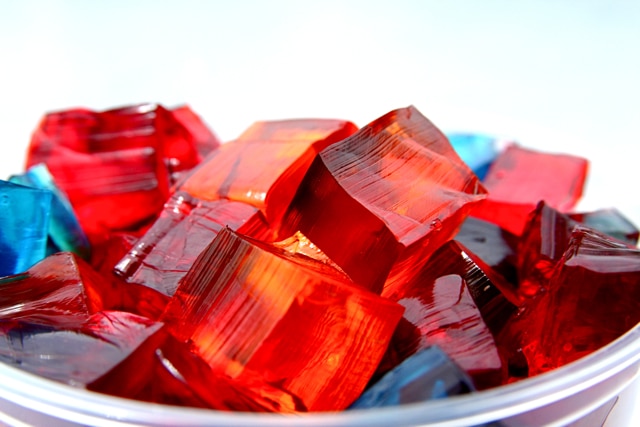Does Warming Formula Aid Infant Digestion? Exploring Benefits
Does Warming Formula Aid Infant Digestion: As a parent, one of your most critical responsibilities is ensuring that your baby gets the correct balance of vitamins and minerals through their diet. If you’ve decided to feed them formula, chances are you’ve heard that warming it may help facilitate digestion. In this article, we’ll take a deep dive into this topic and analyze the evidence to decide if there’s any validity to this phenomenon.

Is Warm Formula Easier To Digest?
Although no scientific proof indicates that the heat of formula has an effect on its digestibility, numerous infants find lukewarm formula more comforting and calming than cool formula, and potentially, there could be less regurgitation after a bottle of warm formula.
A warm bottle may also be ideal for newborns since they are not yet able to regulate their body temperature as adeptly as older babies. Warming your infant’s bottle additionally makes the formula more similar to breast milk, particularly crucial for lactating-fed babies who are supplementing with formula.
Benefits of Feeding Your Baby Warm Formula
According to research, offering formula that is at the ideal temperature of 98 degrees Fahrenheit can create a more comfortable experience for your baby due to its similarity to breast milk.
Related: DO GAS STATIONS SELL BABY FORMULA
Scooping out and warming cold formula requires a great deal of energy from babies, making them lethargic and irritable afterwards. Although it Does Warming Formula Aid Infant Digestion? cannot necessarily be concluded that warm formula is easier to digest, some infants demonstrate signs of digestive distress when drinking cold formula. The only upside to feeding your baby cold formula is that it saves time when you’re in a hurry.
8 Reasons to Warm a Bottle of Formula For Your Baby
Easy to Digest
When a baby consumes properly warmed formula, their delicate digestive system is able to more easily break down the proteins and fats in the milk, allowing them to more readily absorb essential nutrients. Alternatively, if the baby drinks cold milk, their digestive system must work harder, which can cause distress, bloating, and irritability.
Furthermore, warmer formula can also impact the rate at which it’s consumed from the bottle. The slower flow helps reduce the amount of swallowed air, thereby decreasing the risk of gas or colic. Moreover, this temperature also has positive emotional effects for infants; warm milk is especially consoling and contributes to feelings of safety and contentment during mealtimes.
More Comfortable
When the temperature of milk is anything other than room temperature – especially in colder months – babies can become distressed, fussy, and uncomfortable when consuming it.
Related: HOW MANY CANS OF FORMULA PER MONTH
However, a warm bottle of formula can do wonders to soothe them and help them feel more relaxed while aiding digestion. What’s more, simulating the familiar experience of breastfeeding through warm milk can promote a calming atmosphere and foster an intimate connection between the infant and their caregiver.
Mimics Breast Milk
Warmth is an essential element of the breastfeeding experience. It helps simulate the soothing sensation of being close to the mother which can secure and relax a baby during their time together. While formula cannot match the nutrition of mother’s milk, raising its temperature can provide a more natural and satisfying feeding ritual that can add to the baby’s feelings of safety and comfort while also promoting vital bonding between parent and child.
Prevents Gas and Colic
When a newborn swallows air whilst feeding, it can lead to disquiet, puffiness, and colic. Warming formula is an effective way of limiting the amount of air consumed by a baby. By maintaining a consistent rate of milk flow with warmth, gulping air in between feedings is less likely to occur.
Moreover, warm milk is more easily digested than cold milk. This is because the heat from the warming process helps break down the proteins and lipids in milk, rendering it simpler for a baby’s digestive system to extract nutrients from it. As digestion of milk is made frictionless, gas and bloating caused by colic can be avoided.
Faster Feeding
While cold formula may not be as readily accepted by the baby, warming it up can enhance its taste and scent—making it more inviting and encouraging the infant to consume it. Therefore, they are provided for. Nutrients crucial to healthy development and health.
Related: CAN ADULTS DRINK BABY FORMULA
Some babies may desire warm milk rather than cold, so heating the formula might be what it takes to accomplish a successful feeding session, thereby minimizing fussiness along the way.
Reduces Stress
The serenity that comes from the warmth of a bottle of formula is something that babies are instinctively drawn to. As such, when an infant suffers from colic or other digestive ailments, the comforting sensation could help ease their tension and exacerbations.
The heat, too, can be a form of sedation – making it easier for the baby to drift off into peaceful slumber.
Additionally, the act of warming the formula creates a sort of ritualistic efficacy for the baby – one which can establish feelings of trust and steadiness and promote better health and performance during feeding time. All in all, the delectable effects of warm milk make it an ideal source of solace for infants.
Helps Promote Bonding
Spending time caring for your baby can be a truly precious experience, and warming their bottle of formula is just one thoughtful way to demonstrate love and provide nourishment.
This ritual can help foster an atmosphere of security and trust between the two of you, and the warmth of the milk will make feeding time both comforting and enjoyable—creating a positive association with nourishment that can result in better feedings and an overall happier and more contented infant.
Helps Kill Bacteria
The storage of formula can be a dangerous place for bacteria to fester and multiply, yet a simple method of careful warming can sanitize the milk and reduce the risk of infection or adverse health effects.
Yet tap water may still contain hidden bacterial or chemical elements that require further action – heating the mixture is thus an action of assurance, proving a secure environment for baby to nourish on.
How to Safely Warm Baby Formula
When warming up baby formula, it’s essential to be mindful in order to prevent scalding your baby’s mouth. To ensure temperature consistency, there are several methods to explore: try immersing the bottle into a container of warm water, utilize a specially designed bottle warmer, or go for a portable formula warmer marketed for on-the-go occasions.
If you have opted to use a microwave, take precaution and heat the formula one interval at a time while stirring the bottle between each cycle. The last thing to consider is whether or not heating the formula is necessary for your baby.
Before feeding, Does Warming Formula Aid Infant Digestion? always test the temperature by dropping a small amount on your inner wrist as an extra measure of safety. With this level of care, you can make sure your child’s dietary needs are always satisfied without any hassle.

FAQs:
Does warm formula help with gas?
Replacing cold or room temperature water with warm water can help the formula dissolve more swiftly and result in fewer bubbles. Just be sure to not make it too hot.






